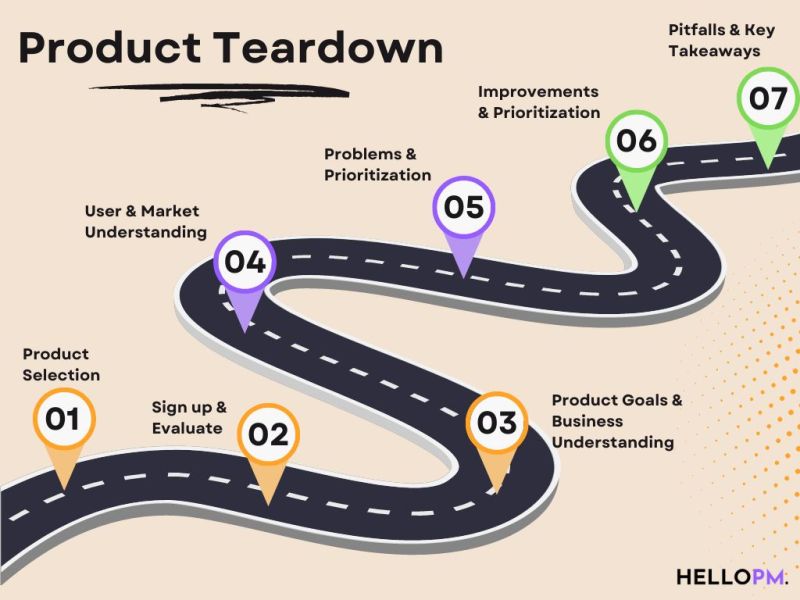The step-by-step guide on How to do a product teardown? 📌

Practicing product teardowns is a great way to hone your product sense and become a better PM, here is one way to do product teardowns.
1/ Understand the problem statement & and set context:
Spend some time understanding the problem statement and goal of the teardown.
The understanding goal is super important, as it will help set the direction, prioritization, and metrics right later on.
Some common goals are Revenue, Engagement, Retention, User Growth etc.
You can also create your own problem statements for self-practice.
2/ Find the stakeholders (users) in the system:
Who are the people who use the product or going to use the product?
For Airbnb we have hosts, guests, and AirBNB (company) as users.
For Spotify, we can further divide users into personas like Travellers, Fitness freaks, etc.
Include the following details for important users: Frustrations, Motivations, Context/Background and Use Cases.
3/ Find the gaps/problems: This is the most important step
Find problems in the life of the users which need to be solved.
Use jobs to be done, and 5 Why to get into the details of the problem.
👉🏽 JTBD guide (Jobs to be done)
👉🏽 5 Whys guide
Create a user journey to find gaps in the product offerings & user needs.
4. Prioritize problems:
All problems are not important. Pick the problems that are most critical for the users and also align with the goals of the teardown (step 1).
5/ Brainstorm solutions:
Go creative!
Brainstorm solutions, and analogies, and do exhaustive research to find solutions
Make sure you find multiple solutions for the problems.
Consider trade-offs of one solution over another.
6/ Prioritize:
Use the simple Impact v/s Effort framework to sort the solutions from step 5.
The impact should align with the goals from Step 1.
If the effort is high, consider breaking the feature into experiments/MVP.
Here is a quick guide to prioritization: https://lnkd.in/dRp5BQdr
7/ Decide success metrics: How would you know if this solution really worked?
North Star metric: Generally this is your main goal from step 1.
Awareness metric: Are people aware of this feature? [If not – you might have a discovery problem]
Adoption: Are people using the feature often? [If not – you might have a usability problem]
Do not disturb metrics: Metrics that shouldn’t be disturbed by this feature. Eg: Onboarding more hosts on AirBNB shouldn’t disturb the average ratings of properties.
8/ Summarize
What’s the solution, how did you get here, & why this is better?
Summarize your imp steps in one slide.
The ability to be concise yet clear would get you extra marks here.
Eg:
A few teardowns that our cohort members do in their very first week of product boot camp at HelloPM 👉🏽 https://bit.ly/3CcbPeT
 WATCH HELLOPM COHORT IN ACTION
WATCH HELLOPM COHORT IN ACTION


